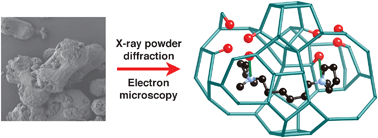Using electron microscopy to complement X-ray powder diffraction data to solve complex crystal structures
Abstract
High-resolution

* Corresponding authors
a
Laboratory of Crystallography, ETH Zurich, CH-8093, Zurich, Switzerland
E-mail:
mccusker@mat.ethz.ch
Fax: +41 44 632 1133
Tel: +41 44 632 3721
High-resolution

 Please wait while we load your content...
Something went wrong. Try again?
Please wait while we load your content...
Something went wrong. Try again?
L. B. McCusker and C. Baerlocher, Chem. Commun., 2009, 1439 DOI: 10.1039/B821716E
To request permission to reproduce material from this article, please go to the Copyright Clearance Center request page.
If you are an author contributing to an RSC publication, you do not need to request permission provided correct acknowledgement is given.
If you are the author of this article, you do not need to request permission to reproduce figures and diagrams provided correct acknowledgement is given. If you want to reproduce the whole article in a third-party publication (excluding your thesis/dissertation for which permission is not required) please go to the Copyright Clearance Center request page.
Read more about how to correctly acknowledge RSC content.
 Fetching data from CrossRef.
Fetching data from CrossRef.
This may take some time to load.
Loading related content
